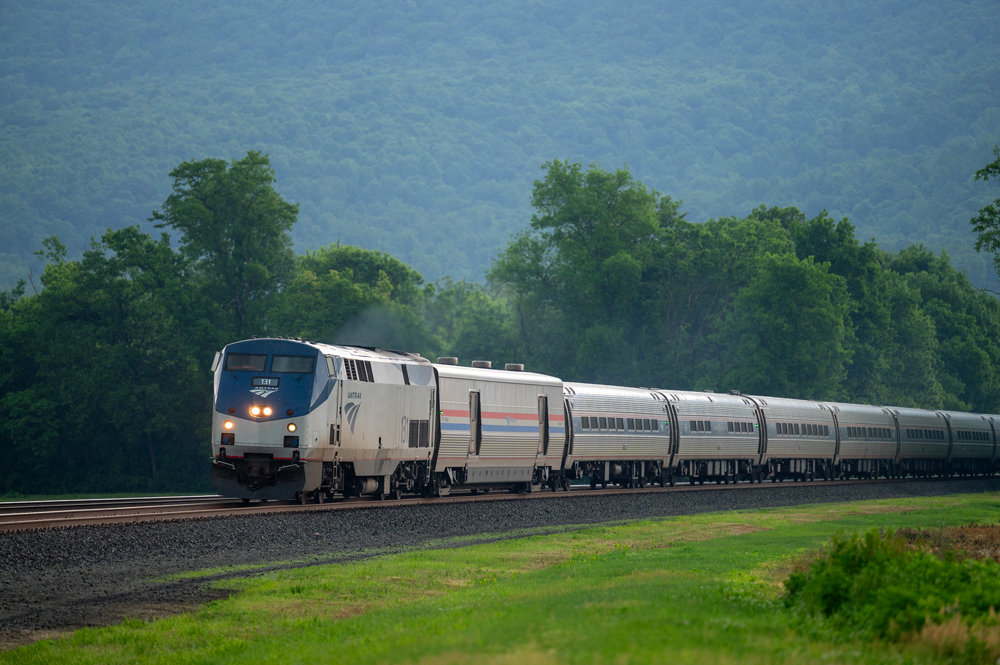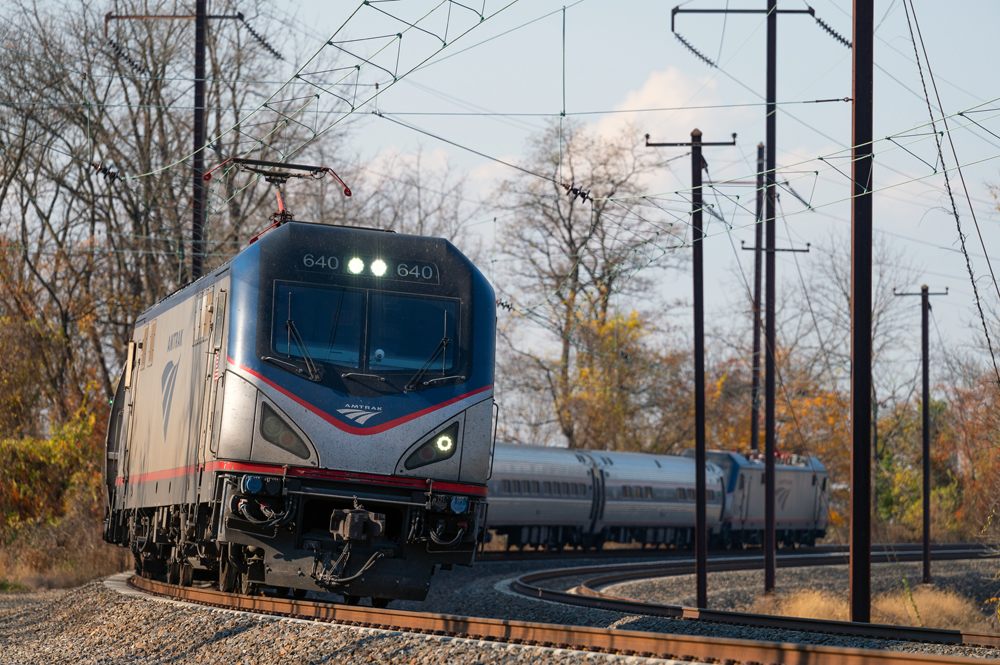Amtrak’s Keystone and Pennsylvanian

One of the most famous passenger routes in the East is the former Pennsylvania Railroad trunk between Philadelphia and Pittsburgh, known for hosting the New York-Chicago Broadway Limited.
I’m a big fan of this route, known as the Main Line. The name stems from the original transportation corridor, the Main Line of Public Works — a multimodal system completed in the mid-1830s and consisting of canals, inclined plane “portage railways,” and primitive railroad lines.
Amtrak’s Keystone Service and Pennsylvanian trains travel this historic route, offering an excellent way to traverse Pennsylvania. Amtrak owns the route as far west as Harrisburg, whereas Norfolk Southern owns the trackage to the west. You can experience Amfleet cars in regular revenue service [see “Travel,” May 2024] and ride behind Amtrak’s powerful Siemens ACS64 Cities Sprinter electrics.
There are many ways to enjoy this route. You could board train No. 43, the westward Pennsylvanian, in the morning at its eastern terminus below ground at New York City’s Pennsylvania Station and spend the day traveling the length of the route, including a swift trip on the electrified Northeast Corridor to Philadelphia and then via Harrisburg to Pittsburgh.
From there you could continue west overnight on Amtrak’s Capitol Limited to Chicago or opt to return the following day on the eastward counterpart, train No. 42.
PRR’s 30th Street Station in Philadelphia (renamed William H. Gray-30th Street in 2014) is by far the grandest station on the route. It’s among my favorites, and the most appropriate place to begin or end a journey on the Main Line.
Keystone trains can reach 110 mph on sections of the Main Line. The perspective you get racing along under wire, stopping momentarily at intermediate stations, then accelerating away is very different than watching trains pass at speed. Locomotives are typically assigned to five-car, push-pull Amfleet sets.
Amtrak has been upgrading its trackage, including installation of concrete ties, with the aim of raising the speed limits and shortening travel times.

The Pennsylvanians are hauled by an ACS64 between New York and Philadelphia. Since the trains reverse direction at 30th Street, it suits operations to make the change to diesel power (typically a GE P42) here, rather than at the end of electrification at Harrisburg.
West from Philadelphia’s Zoo Junction, the PRR route is now Amtrak’s Harrisburg Line. It is shared with suburban operator SEPTA as far as Thorndale.
To accommodate the frequent stops of SEPTA trains, the route retains four tracks to a point just east of the Paoli station. Beyond to Harrisburg the line is largely two bidirectionally signaled main tracks. A few Keystones share the Ardmore stop with SEPTA, and most Keystones also serve SEPTA’s Paoli and Exton platforms.
Beyond SEPTA territory, the scenery becomes rural. Keystones stop at Downingtown (where Amish often board to take their agricultural wares to sell in Philadelphia), Coatesville (the location of a large PRR stone viaduct), and Parkesburg. The latter is where the PRR Atgen-Susquehanna Branch joined the Main Line. Built in the early 20th century, this low-grade freight route was electrified in the 1930s and had been a preferred route for through freight until the Conrail era.
Today, evidence of the once-important junction remains as a wide spot between eastward and westward platforms. A short stub of the freight route remains for Norfolk Southern to serve its local customers.
Keystone trains accelerate quickly from Parkesburg. A few miles west, the route passes Christiana, location of a preserved PRR station on the south side of the tracks and, on the north side, an old freight house and a Conrail caboose, preserved by the Lancaster Chapter of the National Railway Historical Society.
Trains slow for the curves at Gap and then accelerate across Pennsylvania Dutch country, where the rolling hills are home to many Amish and Mennonite farms.
Leaman Place in Paradise is the junction with Strasburg Rail Road. In season, eastward Keystone No. 656 regularly passes Strasburg’s evening steam excursion as the locomotive is running around its train.
Next stop is Lancaster, then Mount Joy and Elizabethtown. The latter is on an 1899 line relocation on a high fill, featuring a limestone-faced Tudor Gothic-style station built in 1915 (on the north side of the line, the third PRR depot in that town) that shares its architectural design with the 1,400-acre Masonic Village south of the railroad. The large modern station at Middletown opened in January 2022.
Harrisburg is the terminus for the Keystones while travelers on the Pennsylvanian continue over the NS Pittsburgh Line, one of the busiest freight routes in the East. Highlights include crossing the Susquehanna River on the 48-arch Rockville Bridge completed in 1902, the segment through the scenic Juniata Valley, the shop complex at Altoona, and rounding world famous Horseshoe Curve on the ascent of the Eastern Continental Divide.
Thanks to Pennsylvania Historical and Museum Commission Railroad Collections Archivist Kurt Bell for his assistance.









